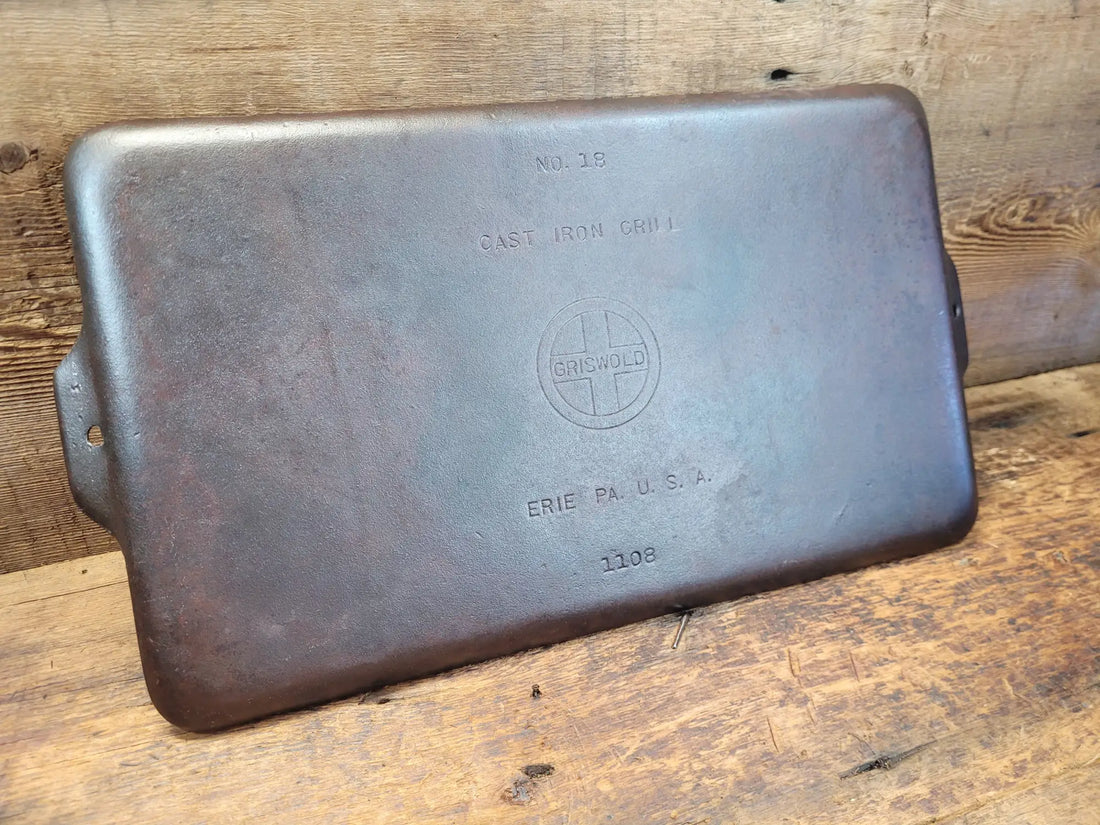
Is cast iron non-stick? Why is my food sticking?
Share
In this installment, I wanted to touch on a question that is asked of us very, very often. One that's asked so much that it's absolutely one of the reasons why we began exploring vintage cast iron in the first place! We are often asked from customers which cast iron pieces are more "non-stick" than others (i.e. new seasoned pans, sanded surfaces, or vintage milled surfaces) and whether it helps or hurts "non-stick" nature of food to the pan. Let's talk about what is meant by "non-stick" and what the beginner REALLY wants to know.
Old Vs. New: Which is "more" non-stick?
When we first starting cooking together we used both new Lodge cast iron and also Teflon coated skillets and stainless cookware. These were given to us as wedding gifts so they were our daily cookers. However, as we started reading about Teflon and some of the theories that are out there about carcinogens, we really wanted to back away from those surfaces. But, we both had trouble cooking on our newer Lodge cast iron when it came to food sticking on the surface. We'd use butter or other oils but to consistently get food to not remain in the pan, but it was difficult at best. Our newer cast iron lived mostly in the cabinets rather than the cooktop because we didn't feel confident actually USING it, especially since it was so heavy.
So a number of years ago, I was given my grandmothers skillet and dutch oven, but we experienced the same issues. They are a 1940's Lodge three notch #8 and an unknown #8 dutch oven that were original to my grandmom Clara Bell, who is the namesake for our website. I LOVED how much lighter the skillet was than my new Lodge, but lo and behold, when I used it to make eggs for the first time...the food STUCK AGAIN! Why was this happening? Am I that much of a culinary novice that I can't get this right?
Well, turns out, the problem wasn't the skillet, it was the skillet OWNER that was creating the sticky surface. I was the culprit. I didn't realize the secret to cooking with cast iron at the time. That secret my friends, is temperature control.
Temperature is key!
Temperature (and specifically LOWER temperatures than what you would use with a stainless steel or alloy skillet) is the most important factor in having your cooked food slide off the cookware and on to the plate. If your food is sticking, whether it be cornbread in a divided skillet or corn pone pan, or your sunny side up eggs, the reason almost every time, is too high of temperature. When we make waffles in our fancy French Waffle Iron from Griswold, those babies will stick like Spiderman to a wall if they are cooking above my 375 degree target. No matter how much oil you use, they will stick because the oil barrier that separates the food from the surface is breaking down. So now, with the help of a good infrared heat thermometer, we keep it in check as we make Saturday morning waffles.
What temp is best?
That question is more of a matter of feel for the food you're cooking. The first rule we have adopted in our house is never to cook on HIGH heat. It's just not necessary for most dishes unless you are browning or searing. But even then, it's usually possible on medium high. For other foods it will take some trial and error to make that perfect fried egg or omelette for almost every aspect of cooking in the kitchen, most applications need no higher than MEDIUM-high heat with cast iron. Cast iron heats up slower than other metals, so you need to make sure you don't blast your pieces right away with heat. However the trade off is that they do hold heat exceptionally well. As you get used to your cast pieces, your "feel factor" will have you on auto pilot in the kitchen.
One last tip that we've found helpful is to keep a log of foods and temps that work best. Whether on a recipe card or on a shared note file on your phone with the family, it helps to keep those kitchen mishaps down especially for those that are finding the old memory isn't as it used to be! Happy Cooking!
